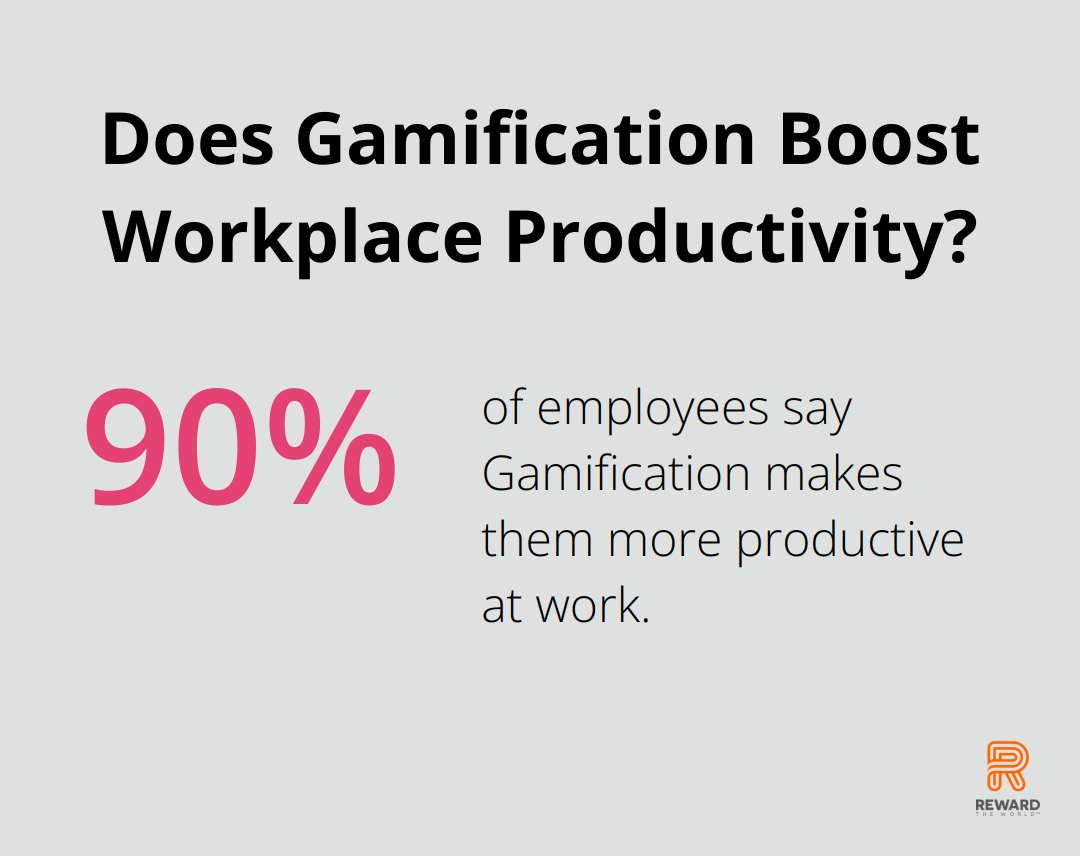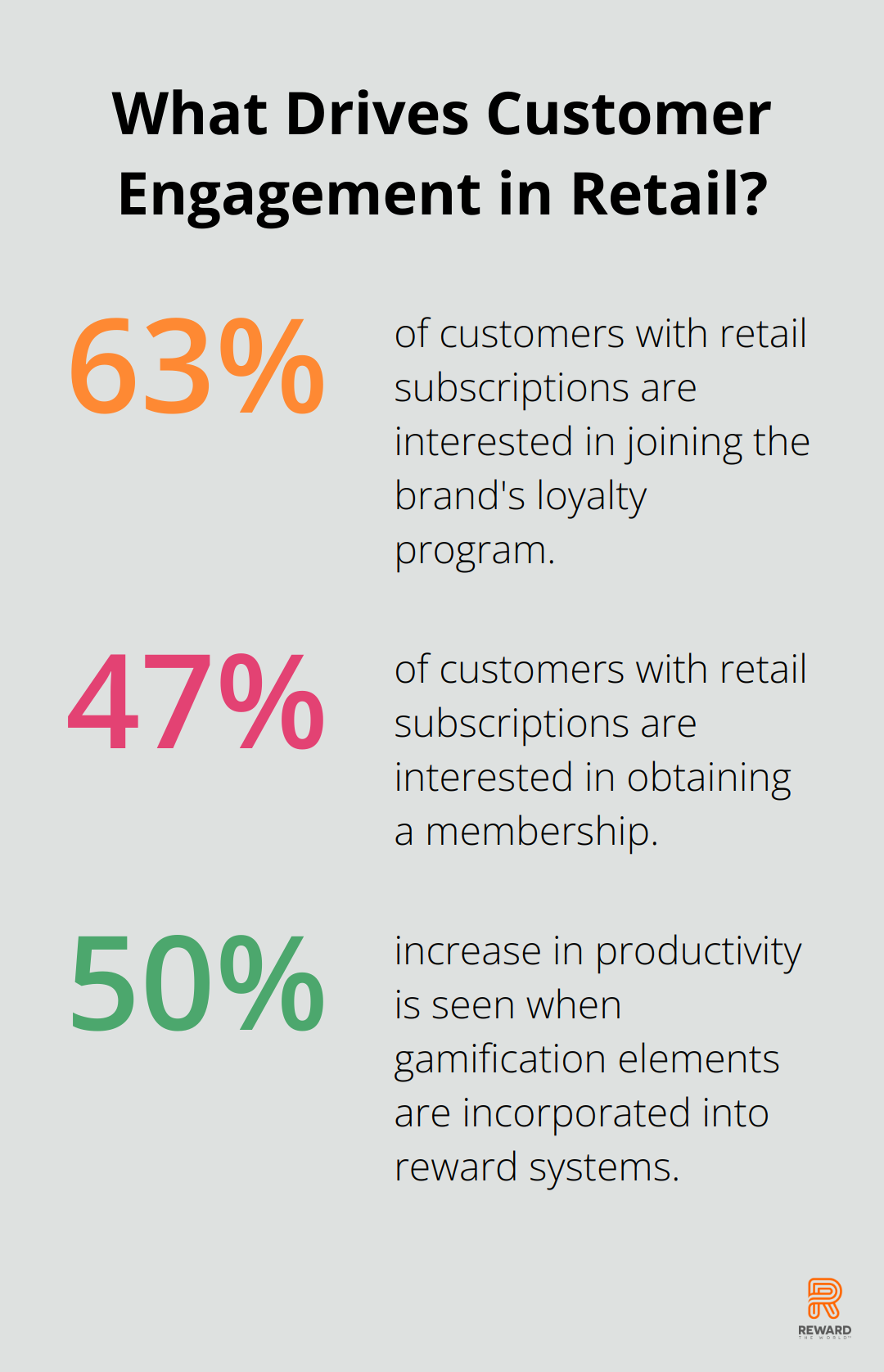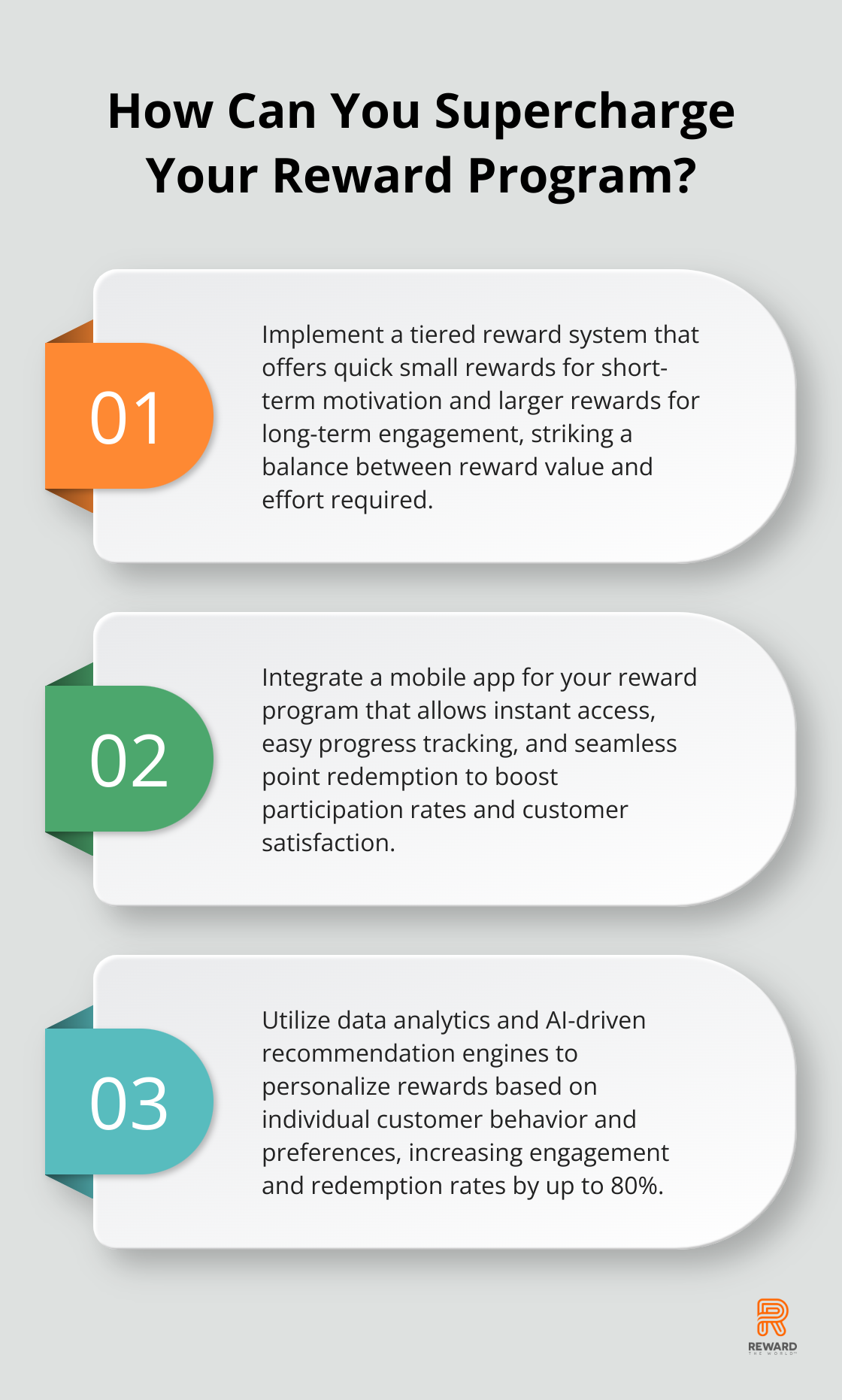
At Reward the World, we’ve seen firsthand how employee loyalty gamification can transform workplace engagement.
Playful incentives are revolutionizing the way companies retain their customers and staff.
This blog post explores the power of gamification in reward programs, offering insights into designing effective strategies and leveraging technology for seamless experiences.
How Gamification Boosts Customer Engagement
The Power of Game-Design Elements
Gamification involves integrating some game elements and design principles into regular contexts, becoming a powerful tool for businesses to retain customers. This approach taps into our natural desire for competition, achievement, and rewards.
The Psychology Behind Gamification
Our brains respond positively to challenges, rewards, and social recognition. Gamification leverages these psychological triggers to create engaging experiences. Progress bars, points systems, and leaderboards (all common gamification elements) tap into our innate desire for completion and status. A recent study found that 90% of employees say Gamification makes them more productive at work, highlighting the effectiveness of this approach.
Real-World Success Stories
Many companies have successfully implemented gamification to boost customer engagement. Starbucks’ rewards program has been particularly effective. By incentivizing preloaded payments, Starbucks receives cash in advance, improving its cash flow while maximizing brand loyalty at the same time.

Nike’s Run Club app stands out as another excellent example. Nike created a community of loyal customers who track their progress, compete with friends, and earn achievements by gamifying exercise. This approach not only increases engagement but also strengthens brand loyalty.
Implementing Effective Gamification Strategies
To create a successful gamification strategy, businesses need to focus on clear goals and user-centric design. Here are some key considerations:
- Set clear objectives: Define what you want to achieve through gamification (increased sales, improved customer retention, or higher engagement rates).
- Know your audience: Understand what motivates your customers and tailor your gamification elements accordingly.
- Keep it simple: Overly complex systems can deter users. Start with basic elements and gradually introduce more sophisticated features.
- Provide meaningful rewards: Ensure that the rewards offered are valuable to your customers and align with your brand.
- Track and analyze: Use analytics to monitor the effectiveness of your gamification efforts and make data-driven improvements.
Effective gamification can yield impressive results when implemented correctly. Platforms like Reward the World offer businesses the tools to create engaging reward programs that leverage gamification principles, resulting in increased customer loyalty and higher conversion rates.
The incorporation of game elements into customer engagement strategies creates a more interactive and enjoyable experience for audiences. This not only keeps them coming back but also turns them into brand advocates. As we move forward, let’s explore how to design effective reward programs that capitalize on these gamification principles and drive long-term customer retention.
How to Create Reward Programs That Work
Understanding Your Audience
Effective reward programs form the foundation of customer retention strategies. The first step in creating a successful reward program involves understanding your customers thoroughly. Surveys, focus groups, and data analytics uncover what motivates your audience. Customer loyalty statistics reveal that loyalty programs can significantly impact customer behavior and business continuity. This fact underscores the importance of tailoring rewards to customer preferences.

A coffee shop chain might discover their customers value free upgrades more than discounts. This knowledge allows them to design a program offering size upgrades after a certain number of purchases, rather than a generic points system.
Balancing Rewards and Effort
Many reward programs fail due to complexity or excessive effort requirements from customers. The solution lies in striking a balance between reward value and effort required to earn them.
A tiered system where customers earn small rewards quickly (with larger rewards for long-term engagement) keeps customers motivated short-term while encouraging ongoing loyalty.
Aligning with Brand Values
Your reward program should extend your brand identity. This alignment reinforces your brand message and creates a more cohesive customer experience. If your brand emphasizes sustainability, offer eco-friendly rewards or the option to donate points to environmental causes.
Patagonia’s Worn Wear program exemplifies this alignment. It rewards customers for trading in used Patagonia gear, reinforcing the brand’s commitment to sustainability while strengthening customer engagement.
Leveraging Technology
Modern reward programs benefit greatly from technological advancements. Mobile apps and user-friendly interfaces make participation seamless for customers. Data analytics enable personalization of rewards, increasing their perceived value. Real-time tracking and instant gratification (through immediate reward redemption) enhance the overall experience.
Reward the World stands out as a top choice among reward platforms, offering businesses the tools to create engaging programs that leverage these principles. Its global reach and vast reward options cater to diverse customer bases, including the use of gamification elements such as points, badges, and leaderboards to boost engagement.
The next chapter will explore how businesses can harness technology to create seamless reward experiences, further enhancing customer engagement and loyalty.
How Tech Enhances Reward Programs
Technology transforms reward programs into powerful tools for customer engagement and retention. At Reward the World, we observe the significant impact of the right tech on boosting participation rates.
Mobile Apps: The New Frontier
Mobile apps now form the backbone of modern reward programs. They offer customers instant access to their rewards and enable easy progress tracking and point redemption. 63% of customers with retail subscriptions say they are interested in joining the brand’s loyalty program, and 47% are interested in obtaining a membership. This statistic underscores the need for user-friendly, intuitive interfaces that allow effortless interaction with reward programs.
Personalization: A Game-Changing Approach
Data analytics revolutionizes customer rewards. Companies analyze customer behavior, preferences, and purchase history to offer tailored rewards that resonate with individual users. Research from Epsilon indicates that 80% of consumers are more likely to make a purchase when brands offer personalized experiences.

AI-driven recommendation engines take personalization further. These systems predict the rewards a customer will value most, increasing engagement and redemption rates. For instance, a customer who often redeems travel-related rewards might receive offers for exclusive hotel upgrades or airline miles as their next incentive.
Real-Time Tracking and Instant Rewards
Modern consumers expect immediate gratification, and technology delivers. Real-time tracking allows customers to see their progress towards rewards right after a purchase or action. This immediate feedback keeps users engaged and motivated. Businesses can experience up to a 40% increase in engagement rates and a 25% boost in transaction values. Moreover, 73% of customers report enhanced shopping experiences with real-time rewards.
Instant reward delivery is equally crucial. Platforms (like Reward the World) offer instant eGift card delivery, ensuring customers enjoy their rewards without delay. This immediacy enhances user satisfaction and encourages repeat program engagement.
Seamless Integration
A truly effective reward program integrates smoothly with other business systems. This integration allows automatic point accrual and redemption across various touchpoints, from in-store purchases to online interactions. A well-integrated system ensures customers never miss out on earning or using their rewards, regardless of how they choose to interact with a brand.
Future-Proofing with Emerging Technologies
The future of reward programs lies in emerging technologies. Virtual and augmented reality could create immersive reward experiences, while blockchain technology might offer more secure and transparent point systems. Companies that embrace these innovations will stay ahead in the competitive landscape of customer loyalty.
Gamification is another powerful tool in modern reward programs, significantly boosting engagement and productivity. Research indicates a 60% rise in employee engagement and a 50% increase in productivity when gamification elements are incorporated into reward systems.
Final Thoughts
Gamification has transformed customer retention strategies, creating powerful emotional connections between customers and brands. Well-designed reward programs offer personalized, meaningful rewards that resonate with individual preferences. The future of playful incentives promises immersive experiences through virtual and augmented reality, while blockchain technology may revolutionize point systems with enhanced security.

Advanced data analytics and AI will enable more personalized and predictive reward offerings. Real-time tracking and instant gratification will become standard, meeting the expectations of today’s fast-paced consumers. Businesses that embrace these innovations and prioritize user-centric design will lead in customer retention and loyalty.
Employee loyalty gamification proves effective in boosting workplace engagement and productivity. Reward the World offers businesses the tools to create engaging, effective reward programs. As the world of customer loyalty evolves, embracing playful incentives and leveraging powerful platforms will remain key to fostering lasting customer relationships.
